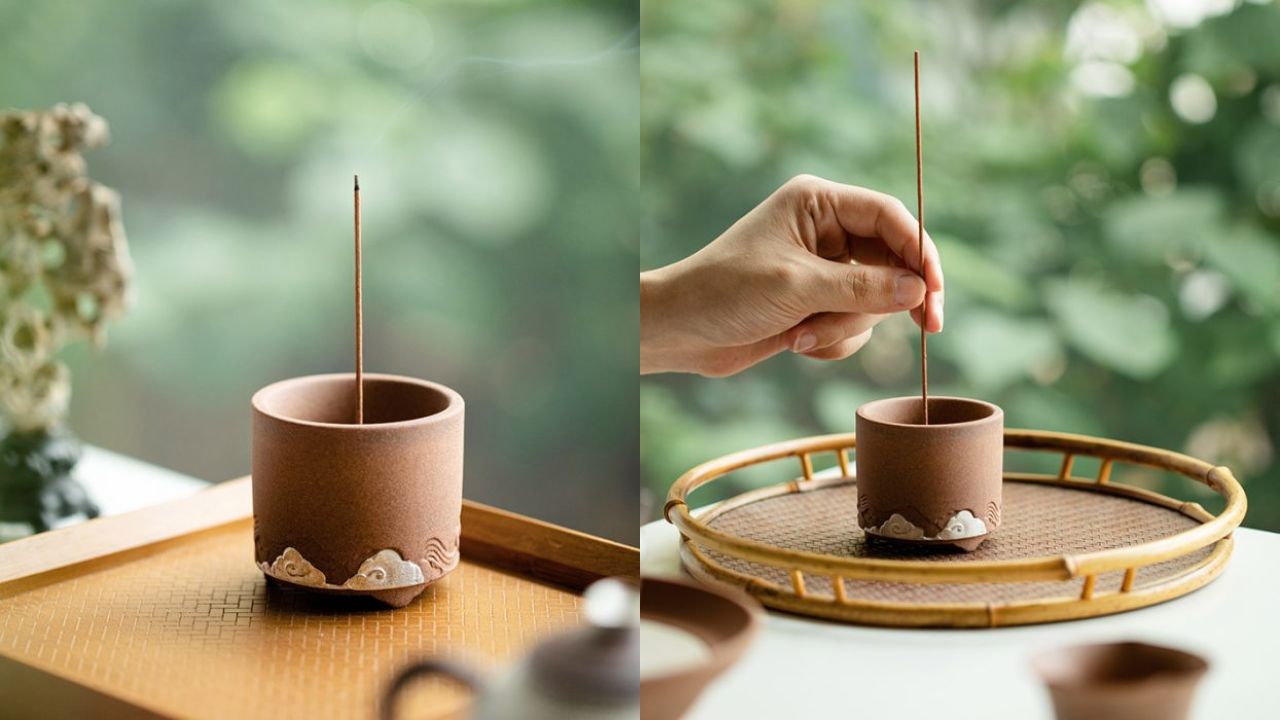People have used incense in religious rituals and meditation sessions for many years. It generates peaceful environments. The ritual of incense burning requires a crucial yet commonly neglected tool, which is the incense holder. The functional design of this incense stick holder serves to catch ash while creating a visual enhancement for any environment. Knowledge about different incense holder types alongside their materials and usage purposes enables users to pick the ideal piece that will improve their environment.
The Purpose and Importance of Incense Holders
Incense holders function as protective devices that maintain safety during incense burning by controlling ash dispersion for sticks, cones, and coils. Incense holders increase efficiency by helping users position their incense correctly to distribute fragrance properly. A suitable holder is necessary to ensure complete incense burning and prevent fire hazards. Incense holders hold dual functions as practical tools and decorative pieces because many manufacturers create them with cultural and spiritual meanings.
Types of Incense Holders
Different incense holder designs exist to support different types of incense products. The stick holder represents the most popular incense accessory because it includes a small opening or indentation to support the angled placement of the incense stick. The holder’s design structure enables ash to drop onto a tray or dish. A flat or slightly concave surface forms the base of cone incense holders where the burning cone rests. The enclosed compartments in certain incense holders direct smoke flow to create mesmerizing visual effects.
Coil incense holders have been specifically designed to accommodate spiral-shaped incense, which temples and large spaces use because these coils burn for extended periods. The holders either maintain the coil in suspension or create a flat burning surface for slow combustion. The waterfall incense burner functions as one of the traditional holders for backflow incense cones. The burners generate a flowing smoke pattern that creates a peaceful visual aspect during the experience.
Materials Used in Incense Holders
Various materials exist for making incense holders because each material brings distinct functional and aesthetic advantages to the design. Wooden holders stand out as the most chosen incense holders because they are both lightweight and natural-looking. The decorative elements of these holders include carved designs and painted patterns, which make them more visually appealing. Ceramic holders stand out with their artistic appearance because they combine intricate designs with heat-resistant properties.
Metal incense holders made from brass or copper serve traditional settings because they possess lasting durability. The patterns and religious motifs on these holders are typically engraved into the material. Stone and marble holders represent an elegant choice because they combine strength with their ability to handle high temperatures. Glass and resin incense holders present contemporary alternatives that feature artistic elements that include intricate sculptures and colorful patterns.
Conclusion
Personal choice, together with incense type and visual appearance, determine which incense holder someone should choose. A holder made for practical use and good design will provide both safety and enjoyment during incense burning. People who want a traditional appearance should consider wooden or brass holders featuring elaborate carvings. People who want a contemporary style often choose between smooth ceramic and glass incense holders. An incense holder serves as a functional tool that transforms the incense experience by creating an improved atmosphere during ritual burning.
